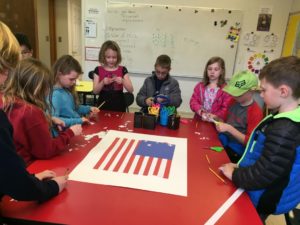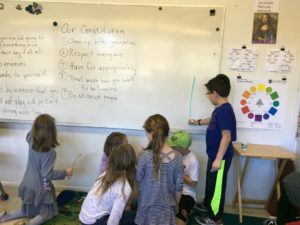Literatura
This week we read El traje nuevo del el emperador. Our objectives were:
- complete Dr. Seuss writing activity
- review reader homework checking that words are in the correct category as well as finding the definition for some of the unknown words
- to use comprehension strategies such as Asking Questions, Predicting and Visualizing to construct meaning from the text
- to use the comprehension skill Classify and Categorize as we read the story the second time
- understand the meaning of our new spelling words
- understand how to combine short sentences to create longer and more fluid sentences
Matemáticas
This week we took our Metric Measurement test and began Chapter 12: Word Problems: Measurement. Our objectives were:
- demonstrate understanding and mastery of the use of metric units to measure length, mass, and volume
- Draw bar-models to solve one-step and two-step measurement problems
- choose the operation to solve one-step and two-step measurement problems
We have been struggling with word problems so some kiddos have brought home math packets with a “Please finish and return stamp” and a date for reinforcement. Students should complete the packet by the date and return it to class.
History & Geography
Social studies with Ms. Marci
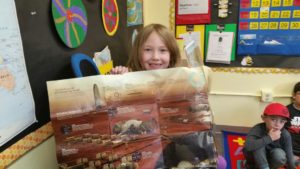 This week we began our next unit on Native Americans:Regions and Cultures. In this domain students will review what they’ve learned in previous grades about the first known inhabitants of North America. They will learn more in-depth information about how some Native Americans first migrated from Asia to North America, how they spread throughout the continents of North America and South America, and how their ways of obtaining food changed over the years. Students will learn about how people adapted to the environment of the region they settled and how this shaped their cultural identity.
This week we began our next unit on Native Americans:Regions and Cultures. In this domain students will review what they’ve learned in previous grades about the first known inhabitants of North America. They will learn more in-depth information about how some Native Americans first migrated from Asia to North America, how they spread throughout the continents of North America and South America, and how their ways of obtaining food changed over the years. Students will learn about how people adapted to the environment of the region they settled and how this shaped their cultural identity.
Our objectives were to:
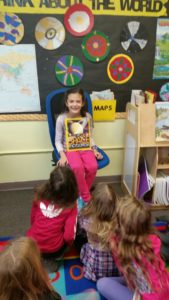 • locate the continents of North America, South America, and Asia on a map
• locate the continents of North America, South America, and Asia on a map
• locate the Bering Strait on a map, and explain that during the Ice Age, this region was an exposed landmass known as Beringia that connected Asia and North America
• Explain how and why nomadic Hunters migrated from Asia to North America
• explain that the ways Native Americans obtain food evolved over time to include hunting, gathering, and in some areas, fishing and farming
• explain that Native Americans spread out across North and South America in search of food and eventually developed different languages and cultures
• describe the importance of trade in the development of farming techniques
• describe the way in which Native Americans handed down their history from one generation to another, compare this to other groups that we have learned about
• explain why native people came to be called “Indians”
• explain that Native Americans still lived throughout North America
We completed our unit on The Constitution with a review, an assessment and the writing of our class constitution. We started our new unit, The War of 1812, by examining the causes and the actual events leading up to 1812. The students worked together to prepare skits illustrating some of the problems America was having in dealing with the British and the Native Americans.
Science
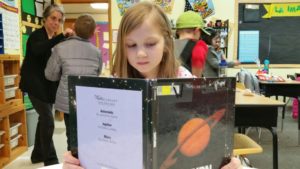 This week in our science domain, Astronomy, we worked on our research project in groups, gathering information on a planet from books and the computers. In our read aloud our focus was on the solar system. We had a great class discussion about eclipses, and discussed how learning about space can be a lifetime journey.
This week in our science domain, Astronomy, we worked on our research project in groups, gathering information on a planet from books and the computers. In our read aloud our focus was on the solar system. We had a great class discussion about eclipses, and discussed how learning about space can be a lifetime journey.
Our objectives were to:
• identify the sun as a constant source of heat and light energy
• classify the sun as a star
• identify our planet earth as the third planet from the sun and ideally suited for
• describe the characteristics of a planet
• describe the eight planets of our solar system and their sequence from the sun
• describe stars at hot, distant, and made of gas
• compare and contrast asteroids, meteoroids, and comets
English Word Work
Spelling groups got their new sorts on Monday and had a spelling test on Friday. In our journals we used the word of the week “flawless” in one entry and students used metaphors or similes in another.
For grammar we continued to work on metaphors, similes, and personification in writing.
Specialist

